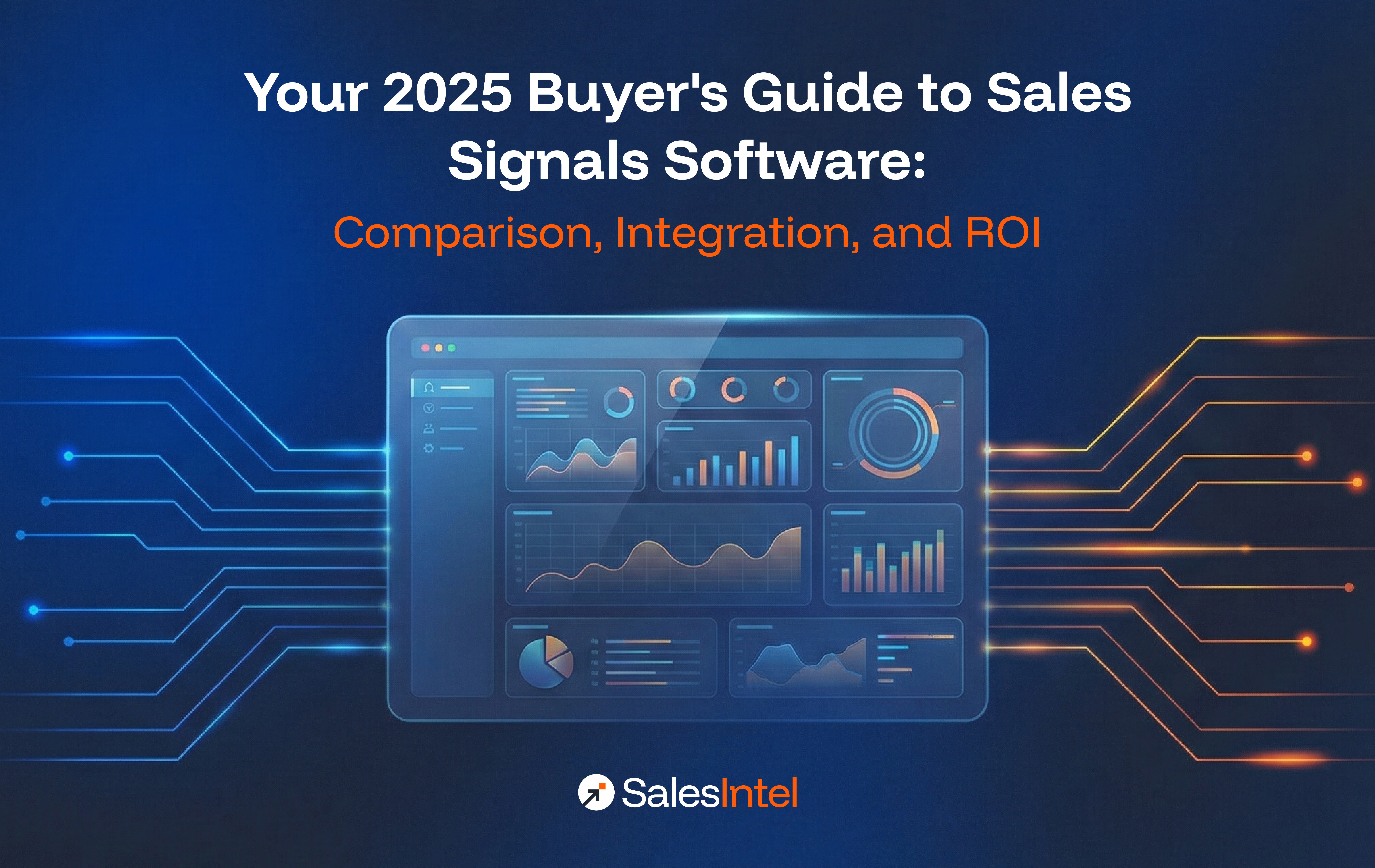In the B2B industry, email automation has become a transformative tool enabling you to streamline communication, offer personalized content, and cultivate leads efficiently. To enhance your email campaigns, it’s crucial to understand and implement effective strategies for B2B email marketing automation.
Engaging prospects through email marketing is essential. However, running successful campaigns requires substantial effort. Automation presents a solution to streamline your email processes and achieve scalable results. Automation technology empowers you to be more strategic and deliver enhanced value by leveraging tailored workflows and personalized messages. Establishing robust automation practices is paramount for optimizing email ROI in B2B marketing.
This article presents established best practices for implementing B2B email marketing automation effectively.
What is B2B Email Marketing Automation?
B2B email marketing automation involves leveraging software to simplifies sending emails to your clients and prospects. Automation helps your business by sending personalized emails, organizing who gets them, planning when to send them, and tracking how well they work. It also enables you to test different versions of emails, and improve their call-to-action buttons. When you can do so much with automating your emails, you can reach more people, get them more interested, and turn them into customers.
Why is B2B Email Marketing Automation Important?
Improved lead generation and nurturing:
B2B email marketing automation helps you collect and nurture leads through personalized emails. This saves time and increases the chances of converting the leads into customers.
More efficient email campaigns:
With automation, you can use templates, schedule emails, test different versions, check analytics, and optimize your campaigns. Effective utilization of the features not only improve your campaign performance but also saves time.
Personalized the user experience:
Automation lets you group and segment your audience and send them content that matches their interests.
Which Types of B2B Emails Should You Send to Your Audience?
-
Welcome Emails:
When new subscribers join your list, sending a welcome email is essential to express gratitude for their trust. You can also include a few lines to let them know what they can expect from your product or service going forward. Tools like Mailchimp and Drip offers good templates in welcoming new subscribers.
-
Value Emails:
Subscribers expect value from your emails, whether or not they convert into paying customers. For example, you can send an email with tips on improving efficiency in project management, a guide to navigating regulatory changes, or a case study showcasing how a similar company overcame a common obstacle. Even if the recipient doesn’t immediately become a paying customer, they still benefit from the useful content provided in the email.
-
New Product or Service Emails:
Keeping subscribers informed about new features, enhancements, or changes ensures they derive maximum value from your offerings.
-
Sales Emails:
Email marketing aims to drive revenue, necessitating sales, and conversion-focused emails. Automation allows you to enhance your sales emails through limited-time deals, exclusive offers, or persuasive sales copy. Client Ascension’s B2B agency program demonstrates effective sales email strategies.
-
Discount Emails:
While some B2B companies refrain from promotions, targeted discount emails can persuade potential customers in the decision stage, and provide the final nudge for hesitant buyers.
-
Testimonials & Case Study Emails:
Demonstrating your products or services’ tangible value and success builds trust and credibility at the consideration and decision stages.
While more involved, newsletters offer a lucrative opportunity for ongoing communication with subscribers. These emails build sustained engagement with your audience and can yield significant returns over time.
Email Marketing Automation Best Practices
-
Make Content That People Want
The main thing to remember in email automation, which is good for all email campaigns, is always creating useful content for your customers. Exciting content is the key to a successful email marketing campaign.
Write catchy subject lines, use simple writing, and add images wherever possible to keep your audience interested.
The best way to do this is to use different data types to support your content creation efforts that includes:
-
Existing Customer Data:
Existing customer data is an asset. It shows what your current customers like and how they behave. You can use this to send them emails about things they’re interested in or products they might like based on what they’ve bought before.
-
Firmographic Data:
Firmographic data tells you about the companies your leads work for, like their industry or size. You can use this to send emails that talk about how your product or service can help their specific type of business.
-
Technographic Data:
Technographic data shows what kind of technology your leads use. You can use this to send emails that talk about how your product works with the tools they already have or how it can make their work easier.
-
Intent Data:
Intent data tells you when leads are interested in something you offer. You can use this to send them emails at the right time, with information or offers that match what they’re looking for, making it more likely they’ll engage with your emails and become customers.
-
Understand the Customer Journey
Figure out how your customers interact with your brand. Understand what they like about your emails and what they ignore. Use this info to create personalized emails that your audience will engage with.
Once you know how your customers interacts with your emails, plan the best journey for them. Based on their actions, create automated campaigns that lead them down the sales funnel.
Focus on journey orchestration. It provides ways to address customer needs and identify friction points during crucial moments of their experience with your brand. This will help you guide customers toward content and insights they will love. Ultimately the goal should be to encourage them to either download eBooks, whitepaper, case studies, or schedule a demo.
For example, if a customer buys something after clicking on an email, they should get a different email than someone who didn’t click.
-
Practice Good Email Hygiene
To increase the effectiveness of your automated emails, keep your email list clean. Only send emails to people who want them, and always give your audience an option to unsubscribe. If someone unsubscribes or stops interacting with your emails, take them off your list. This increases the deliverability of your emails and helps ensure your emails are not flagged as spam.
Regularly check your email list for addresses that bounce back or look like spam. Figure out why they bounced back before removing them. There are two kinds of bounces: hard and soft. Hard bounces are permanent, for example, if an email address doesn’t exist. Soft bounces are temporary (ex: if the inbox is full). Fixing bounce-backs and keeping your list clean are essential for email hygiene.
-
Refine Your Site for Conversions and Better Experiences
To make your automated emails more effective in driving sales, consider what happens after someone clicks. Your aim should be to offer customers the best experience and assist them throughout the buying process, so ensure your website is set up to convert visitors into customers.
Optimize your website to make it easier for visitors to purchase. Make sure every part of their experience, from seeing products to checking out, is smooth and valuable.
Customers like businesses that understand their needs and make buying easy so, focus on making the whole experience great, not just the emails they get. By considering the whole customer journey, you can ensure your emails and website work together to deliver a smooth sales process.
Creating an Email Marketing Automation Strategy
When it comes to email marketing automation you need to be organized and smart about how you use automation tools for your campaigns.
Whether your business is just starting out with a strategy or you’re adjusting your plan, here are a few steps you should take:
1. Set Your Goals:
Decide what you want from your email marketing. Do you want to improve your cart abandonment rate or win back customers who haven’t bought anything in a while? Having clear goals will help you make a strong email marketing plan.
2. Choose Your Email Types:
Once you know your goals, pick the suitable types of email campaigns you’re going to use. Think about what type of emails would be the best at each stage to reach your goals.
- Introduction Emails:
Introduce your company, products, or services to potential business partners or clients.
- Educational Content Emails:
Share informative content such as industry reports, whitepapers, or webinars to educate prospects about relevant topics and establish your expertise.
- Case Study Emails:
Highlight successful projects or case studies to showcase how your products or services have helped other businesses solve similar challenges.
- Product Updates or Announcements:
Inform existing or potential clients about new product features, updates, or releases that could benefit their business.
- Event Invitation Emails:
Invite prospects or clients to attend industry events, webinars, workshops, or conferences where they can learn more about your offerings.
- Demo or Free Trial Offer Emails:
Offer prospects the opportunity to schedule a product demo or try out your services for free to experience their value firsthand.
- Re-engagement Emails:
Reach out to inactive or dormant leads to reignite their interest in your products or services and encourage them to engage with your business again.
- Customer Success Stories:
Share success stories or testimonials from satisfied customers to demonstrate the value and benefits of working with your company.
3. Plan Your Customer Journey:
Figure out the path you want your customers to take. How can you encourage them to act? If they go off track, how can you get them back on? Answering these questions will help you plan your email marketing.
Suppose, you are a software company selling a project management tool to businesses. You want potential customers to sign up for a free trial and eventually upgrade to a paid subscription. To guide them along this path, you might send out an email highlighting the key features and benefits of your software, along with a call-to-action prompting them to start their free trial. If a recipient opens the email but doesn’t click through to sign up, you can follow up with another email offering a demo or case studies showcasing how other businesses have benefited from your tool. This approach helps steer potential customers back on track towards engaging with your product and, ideally, becoming paying customers.
4. Make Great Content:
Good content is key to successful marketing. Your emails should look and read well, no matter where your customers are in their buying journey.
Whether your customers are just starting to explore your products/services or are ready to make a purchase decision, the quality of your content can significantly influence their journey.
For instance, a potential customer, Sarah, who is in the early stages of researching solutions for her business needs. She receives an email from your company introducing a guide titled “10 Essential Tips for Boosting Productivity in Your Team.” This guide provides valuable insights and actionable tips that resonate with Sarah’s pain points. Even though she’s not ready to buy yet, the informative content establishes your company as a helpful resource, keeping you top-of-mind when she’s ready to make a decision.
Now consider another scenario where a different customer, John, is further along in his buying journey. He’s been engaging with your company’s content for a while and is now evaluating different vendors. He receives an email showcasing case studies of how businesses similar to his have successfully implemented your solutions and achieved tangible results. These real-world examples provide John with the social proof he needs to feel confident in choosing your company over competitors.
In both scenarios, the emails are well-crafted and tailored to meet the needs of the recipients at their respective stages of the buying journey. By providing valuable content that is relevant and timely, you not only engage your audience but also nurture them towards conversion.
5. Set Up Workflows:
Once you know what actions you want customers to take and what campaigns you need, design your triggers, schedules, and workflows in your email marketing software. Schedules determine specific times or dates for sending out emails to your subscribers. Triggers are the events or actions that automatically initiate the sending of emails, such as subscribing to a newsletter or abandoning a cart. Workflows are the sequences of automated actions and emails triggered by user behavior or predefined conditions, designed to guide subscribers through a personalized journey.
6. Test and Improve:
Even with automation tools, you need to keep testing your strategy to see what works best. Experiment with different email format (text email, text with image, video emails, etc.), content, timing, or number of emails.
Choosing the Right Email Marketing Automation Software
To make your email marketing plan work, you need software to handle it. However, not all email automation tools are the same. When picking one, there are essential things to consider:
What Kind of Email Campaigns Do I Want to Launch?
First, make sure the tool can run the campaigns you want and that it supports the types of campaigns(discussed above) you need.
What Features Do I Need?
Make a list of features you need and rank them in order of importance. Things like setting triggers, scheduling campaigns, and creating complex workflows are important.
Here are general features:
- Email Templates:
Pre-designed templates for creating visually appealing emails without coding.
- Drag-and-Drop Editor:
Intuitive interface for customizing email layouts and content.
- Automation Workflows:
Ability to create automated sequences of emails triggered by user actions or predefined conditions.
- Segmentation:
Capability to divide your subscriber list into segments based on demographics, behaviors, or other criteria for targeted messaging.
- Personalization:
Tools for dynamically inserting subscriber names, personalized recommendations, or other custom content to increase engagement.
- A/B Testing:
Functionality to test different email subject lines, content, or designs to optimize campaign performance.
- Analytics and Reporting:
Insights into email open rates, click-through rates, conversion rates, and other key metrics to assess campaign effectiveness.
- Integration:
Compatibility with other marketing tools, CRMs, and e-commerce platforms for seamless data exchange and workflow automation.
- Compliance:
Built-in features to ensure compliance with email marketing regulations, such as GDPR and CAN-SPAM.
- Optimization Tools:
Features for optimizing send times, frequency, and delivery to maximize email deliverability and engagement.
- Responsive Design:
Ensuring emails are mobile-friendly and display correctly across various devices and email clients.
- List Management:
Tools for managing subscriber lists, including adding, removing, and updating contacts, as well as handling unsubscribe requests.
- Transactional Email Support:
Ability to send transactional emails, such as order confirmations or password resets, in addition to marketing emails.
- API Access:
Access to an API for custom integrations or advanced automation workflows beyond the tool’s native capabilities.
- Customer Support:
Access to customer support resources, including documentation, tutorials, and live assistance, to help troubleshoot issues and maximize usage of the tool.
Can It Work with My Other Tools?
Effective integration between your email automation software and other digital marketing tools is crucial for seamless operation and optimal performance. This integration ensures that your automation platform can effectively leverage the data and functionalities of your other tools, such as CRM systems or analytics platforms. For example, your automation software should seamlessly connect with your customer data tool to access relevant information about your audience, enabling personalized and targeted campaigns. This interoperability ensures consistency in data management and enables you to derive actionable insights for better decision-making and campaign optimization.
Mastering B2B Email Marketing Automation
B2B email marketing automation is crucial for you and your team to reach and engage your target audience effectively. By understanding your customer journey, practicing good email hygiene, refining your site for conversions, and choosing the right email marketing automation software, you can create successful email campaigns that drive engagement and conversions. With dedication and careful planning, you can leverage the power of email automation to nurture leads, build relationships, and ultimately grow your business in 2025 and beyond.




